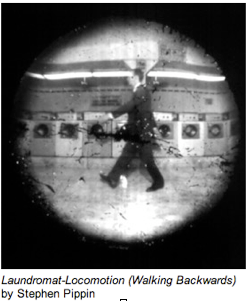
from tate website,
"Pippin's work between 1982 and 1991 involved the conversion of pieces of furniture, architectural spaces and diverse objects into elementary cameras. With these, Pippin developed a practice in which he created a strong relationship between the constructed camera and the subject of the image. He used a fridge as a camera to photograph food and a wardrobe as a camera to photograph clothes."
this works with my ideas about processes matching materials and site- garden spray bottle holding the photographic developer and begs the question- what would be appropriate for a garden shed to photograph?! temporality of the dying image with dying organic or redundant matter?
i also like this write up found on the spank the monkey site as it makes this point about Laundromat, his 1999 Turner prize entry (image above);
"Unfortunately, the problem with Pippin's work is that the process is infinitely more interesting than the results. "
not that i like the use of the word unfortunately- although in a product driven art world this statement may fit the writers' analogy?, but the process of a horse or man running up and down in a launderette, adapting a washing machine into a pinhole camera- marrying the process of washing clothing with the process of processing a photograph, showing the tech drawings and devices of adapting the machines into cameras- is this a possibility for my documentation??? the set up for the event experinces as I won't have filming of the experinences?
visible-bannerno-image.png)


No comments:
Post a Comment